 What is Male Breast Cancer ?
What is Male Breast Cancer ?Breast cancer is a malignant tumor that has developed from cells of the breast. The disease occurs primarily in women, but occasionally in men.
Many people do not realize that men have breast tissue, and that it's possible for them to develop breast cancer. Until puberty, young boys and girls have a small amount of breast tissue consisting of a few ducts located under the nipple and areola (the area around the nipple). At puberty, a girl's ovaries produce female hormones that cause breast ducts to grow, cause lobules (milk glands) to form at the ends of the ducts, and increase the amount of stroma (fatty and connective tissue surrounding the ducts and lobules). On the other hand, male hormones produced by the testicles prevent further growth of breast tissue.
Like all cells of the body, a man's breast duct cells can undergo cancerous changes. Because women have many more breast cells than men do, and perhaps because their breast cells are constantly exposed to the growth- promoting effects of female hormones, breast cancer is much more common in women.
 There are many types of breast disorders that can affect both men and women. Most breast disorders are benign (not cancerous). Benign breast tumors do not spread outside of the breast and are not life-threatening. Other tumors are malignant, (cancerous), and may become life- threatening. Benign tumors, such as papillomas and fibroadenomas, are quite common in women but are extremely rare in men.
There are many types of breast disorders that can affect both men and women. Most breast disorders are benign (not cancerous). Benign breast tumors do not spread outside of the breast and are not life-threatening. Other tumors are malignant, (cancerous), and may become life- threatening. Benign tumors, such as papillomas and fibroadenomas, are quite common in women but are extremely rare in men.Gynecomastia is the most common breast disorder of males. It is not a tumor, but is just an increase in the amount of a man's breast tissue. Usually, men have too little breast tissue to be felt or noticed. A man with gynecomastia has a button-like or disk-like growth under his nipple and areola, which can be felt and sometimes seen. Gynecomastia, common among teenage boys, is due to changes in hormone balance during adolescence. The same condition is not unusual in older men, also due to changes in their hormone balance.
Gynecomastia may also rarely be caused by tumors or other diseases of certain endocrine (hormone- producing) glands that cause a man's body to produce more estrogen (the main female hormone). Some estrogen is normally produced by men's glands, but not enough to cause breast growth. Because the liver is important in male and female hormone metabolism, liver diseases can change a man's hormone balance and cause gynecomastia.
Many commonly prescribed medications can sometimes cause gynecomastia, too. These include some drugs used to treat ulcers and heartburn, high blood pressure, and heart failure. Men with gynecomastia should ask their doctors about whether any medications they are taking might be the cause of this condition.
 Klinefelter's syndrome, a rare genetic condition, can cause gynecomastia and can increase a man's risk of developing breast cancer. It is discussed further in the sections on male breast cancer risk factors and causes.
Klinefelter's syndrome, a rare genetic condition, can cause gynecomastia and can increase a man's risk of developing breast cancer. It is discussed further in the sections on male breast cancer risk factors and causes.OncologyStat for additional reading
Understanding some of the key words used to describe various types of breast cancer is important. An alphabetical list of terms, including the most common types of breast cancer, is provided below:
Adenocarcinoma: This is a general type of cancer that starts in glandular tissues anywhere in the body. There are several subtypes of adenocarcinoma which account for nearly all breast cancers.
Ductal carcinoma in situ (DCIS): Ductal carcinoma in situ is a type of breast adenocarcinoma that does not spread outside the breast. Cancer cells fill the ducts but do not spread through the walls of the ducts into the fatty tissue of the breast. Nearly 100% of men or women diagnosed at this early stage of breast cancer may be cured. Most cases of DCIS are diagnosed by mammography, and the diagnosis of DCIS is becoming more common among women who get routine screening mammograms. However, male breast cancer is so rare that routine breast x-rays are not recommended, and only about 5% of men's breast cancers are found at this early stage. Sometimes DCIS causes a man to develop a breast discharge (nipple fluid leakage) and draws attention to his noninvasive cancer. Comedocarcinoma is a type of ductal carcinoma in situ (DCIS), where some of the cancer cells within ducts spontaneously begin to degenerate.
Infiltrating (or invasive) ductal carcinoma (IDC): Starting in a duct of the breast, this type of adenocarcinoma breaks through the wall of the duct and invades the fatty tissue of the breast. At this point, it has the potential to metastasize, or spread, to other parts of the body. Infiltrating ductal carcinoma (alone or mixed with other types of invasive or in situ breast cancer) accounts for 80% - 90% of male breast cancers.
Infiltrating (or invasive) lobular carcinoma (ILC): Although the male breast has no lobules, cells from the ends of a man's breast ducts can develop into cancers which, under the microscope, look like they come from lobules. ILC is a type of adenocarcinoma. It accounts for about 10% - 15% of female breast cancers, but about only 2% of male breast cancers.
In situ: This term is used to indicate an early stage of cancer in which a tumor is confined to the immediate area where it began. Specifically in breast cancer, in situ means that the cancer remains confined to ducts (ductal carcinoma in situ, DCIS) or lobules (lobular carcinoma in situ, LCIS), and it has neither invaded surrounding fatty tissue in the breast nor spread to other organs in the body. DCIS occurs relatively often in both men and women. In contrast, LCIS is common in women, but very rare among men.
Metastases: These are satellite tumors that indicate a breast cancer has spread from the site where it began (referred to as the primary cancer) to a lymph node or a distant organ, such as the lung, liver, or brain.
Microcalcifications: These are small calcium deposits, often found in clusters by a mammogram. These deposits, sometimes called calcifications, are neither cancer nor tumors. But they are signs of changes within the breast, and certain patterns of calcifications can be associated with cancer or benign breast disease.
Node-positive and node-negative breast cancer: Node-positive means that the cancer has spread (metastasized) to the lymph nodes under the arm on the same side, which are called axillary nodes. Node-negative means that the biopsied lymph nodes are free of cancer. This is an indication that the cancer is less likely to recur.
Paget's disease of the nipple: This type of breast cancer starts in the breast ducts and spreads to the skin of the nipple. The areola (the dark circle around the nipple) may also be involved. With Paget's disease of the nipple, there is usually a history of crusting, scaly, red tissue on the nipple and itching, oozing, burning, or bleeding.
Using the fingertips, a lump may be detected within the breast. If no lump can be felt, the cancer generally has a good prognosis. Paget's disease may be associated with in situ carcinoma or with infiltrating breast carcinoma (see above). It accounts for about 1% of female breast cancers and a higher percentage of male breast cancers.
Because the male breast is much smaller than the female breast, all male breast cancers start relatively close to the nipple, so spread to the nipple is more likely.
Prevention
The large variations in penile cancer rates throughout the world strongly suggest that penile cancer is a preventable disease. The best way to reduce the risk of penile cancer is to avoid known risk factors whenever possible.
In the past, circumcision has been suggested as a strategy for preventing penile cancer. This suggestion is based on studies that reported much lower penile cancer rates among circumcised men than among uncircumcised men. However, most researchers now believe those studies were flawed, because they failed to consider other factors that are now known to affect penile cancer risk. For example, some recent studies suggest that circumcised men tend to have certain other lifestyle factors associated with lower penile cancer risk -- they are less likely to have multiple sexual partners, less likely to smoke, and more likely to have good personal hygiene habits. Most public health researchers believe that the penile cancer risk among uncircumcised men without known risk factors living in the United States is extremely low. The current consensus of most experts is that circumcision should not be recommended as a strategy for penile cancer prevention.
On the other hand, it is reasonable to suspect that avoiding sexual practices likely to result in human papillomavirus (HPV) infection might lower penile cancer risk. In addition, these practices are likely to have an even more significant impact on cervical cancer risk. Until recently, it was thought that the use of condoms ("rubbers") could prevent infection with HPV. But recent research shows that condoms cannot protect against infection with HPV.
This is because HPV can be passed from person to person by skin-to-skin contact with any HPV-infected area of the body, such as skin of the genital or anal area not covered by the condom. It is still important, though, to use condoms to protect against AIDS and other sexually transmitted diseases that are passed on through some body fluids. The absence of visible warts cannot be used to decide whether caution is warranted, since HPV can be passed on to another person even when there are no visible warts or other symptoms. HPV can be present for years with no symptoms, so it can be difficult or impossible to know whether a person with whom you might have sex might be infected with HPV.
It is also known that the longer a person remains infected with any type of HPV that can cause cancer, the greater the risk that infection will lead to cancer. For these reasons, postponing the beginning of sexual activity in life and limiting the number of sexual partners are two ways to reduce the chances of developing penile cancer.
Smoking is another factor associated with increased penile cancer risk. And, it is even more strongly associated with several very common and frequently fatal cancers, as well as noncancerous conditions such as heart disease and stroke. Quitting smoking or never starting in the first place is an excellent recommendation for preventing a wide variety of diseases, including penile cancer.
Because poor hygiene habits are associated with increased penile cancer risk, and some studies suggest that smegma (the material that accumulates underneath the foreskin) may contain cancer-causing substances, many public health experts recommend that uncircumcised men practice good genital hygiene by retracting the foreskin and cleaning the entire penis. If the foreskin is constricted and difficult to retract, a physician may be able to place a small cut (incision) in the skin to make retraction easier.
Since some men with penile cancer have no known risk factors, it is not possible to completely prevent this disease.
 Diagnostic
Diagnostic
The most common sign of breast cancer is a new lump or mass. A mass that is painless, hard, and has irregular edges is more likely to be cancerous, but rare cancers are tender, soft, and rounded. For this reason, it is important that any new breast mass or lump be checked by a health care provider with experience in diagnosis of breast diseases. Once certain signs and symptoms raise the possibility that a man may have breast cancer, his physician will use one or more methods to be absolutely certain that the disease is present and to determine the stage to which the cancer has developed.
Complete medical history: The first step is gathering a complete personal and family medical history from the patient. This will provide information about symptoms and risk factors for breast cancer or benign breast conditions.
Clinical breast exam: A thorough clinical breast examination will be performed to locate the lump or suspicious area and feel its texture, size, and relationship to the skin and muscle tissue. The rest of the body will also be examined to look for any evidence of spread such as enlarged lymph nodes or an enlarged liver. The patient's general physical condition will also be evaluated.
Diagnostic mammography: Diagnostic mammography is an x-ray examination of the breast. In some cases, special images known as cone views with magnification are used to make a small area of altered breast tissue easier to evaluate. The diagnostic work-up may suggest that a biopsy is needed to tell whether or not the lesion (abnormal area) is cancer.
Breast ultrasound: Ultrasound, also known as sonography, uses high- frequency sound waves to outline a part of the body. High-frequency sound waves are transmitted into the area of the body being studied and echoed back. The sound wave echoes are picked up and converted by a computer into an image that is displayed on a computer screen. No radiation exposure occurs during this test. Breast ultrasound is sometimes used to evaluate breast abnormalities that are found during mammography or a physical exam. Ultrasound is useful for some breast masses, and is the easiest way to tell if a cyst is present without placing a needle into it to draw out fluid.
Nipple discharge examination: If there is a nipple discharge, some of the fluid may be collected. The fluid is then examined under a microscope to determine if any cancer cells are present. If cancer cells are not seen in the nipple secretions but a suspicious mass is present, a biopsy of the mass is needed.
Biopsy: A biopsy is the only way to tell if a breast abnormality is cancerous. Unless the doctor is sure the lump is not cancer, this should always be done. All biopsy procedures remove a tissue sample for examination under a microscope. There are several types of biopsies, such as fine needle aspiration biopsy, core biopsy, and surgical biopsy. Your doctor will choose a type of biopsy based on your individual situation.
Fine-needle aspiration biopsy (FNAB): FNAB is the easiest and quickest biopsy technique. A thin needle, about the size of a needle used for blood tests or for immunizations is used. The needle can be guided into the area of the breast abnormality while the doctor is feeling or palpating the lump. A FNAB of solid (not fluid-filled) lumps yields small tissue fragments. Microscopic examination of FNAB samples can determine whether most breast abnormalities are benign or cancerous. In some cases, a clear answer is not obtained by FNAB, and another type of biopsy is needed.
Core biopsy: The needle used in core biopsies is larger than that used for FNAB. It removes a small cylinder of tissue from a breast abnormality. The biopsy is done with local anesthesia in the doctor's office.
Surgical biopsy: Surgical removal of all, or a portion, of the lump for microscopic analysis may be required.
Many doctors prefer a two-step biopsy. In this method, a sample of the mass or, sometimes, the entire mass is removed in the doctor's office or hospital outpatient department. A local or regional anesthesia with intravenous sedation is used and the patient is awake during the procedure. If the diagnosis is cancer, the patient has time after the procedure to learn about the disease and discuss all treatment options with the cancer care team, friends, and family. If additional breast tissue or lymph nodes need to be removed, this will be done during a later operation. The short delay until additional surgery does not affect survival. Of course, a diagnosis made by needle biopsy counts as the first step of a two-step procedure.
With a one-step biopsy, the patient is given general anesthesia and is asleep during the entire process. A biopsy is performed and the tissue sample is frozen. The frozen sample is examined right away under a microscope in the pathology laboratory. If cancer cells are present, the surgeon immediately proceeds with treatment, such as mastectomy, which the patient had previously approved. The patient does not know until after waking up whether the lump was cancerous and whether surgery was performed. One-step procedures are rarely recommended for women since lumpectomy is often a surgical treatment option. Since many male breast cancers are best treated by mastectomy, one- step and two-step procedures are both appropriate options.
Laboratory Testing of Breast Cancer Biopsy Samples
Types of breast cancer: The tissue removed during the biopsy is examined in the lab to see whether the cancer is in situ (not invasive) or invasive. The biopsy is also used to determine the cancer's type. The most common types, invasive ductal and invasive lobular cancer, are treated the same way. In some cases, special breast cancer types that tend to have a more favorable prognosis (medullary, tubular, and mucinous cancers) are treated differently. For example, adjuvant hormonal therapy or chemotherapy may be recommended for small stage I cancers with unfavorable microscopic features but not for small cancers of the types associated with a more favorable prognosis.
Grades of breast cancer: A pathologist looks at the tissue sample under a microscope and then assigns a grade to it. The grade helps predict the patient's prognosis because cancers that closely resemble normal breast tissue tend to grow and spread more slowly. In general, a lower grade number indicates a slower-growing cancer while a higher number indicates a faster-growing cancer.
Histologic tumor grade (sometimes called its Bloom-Richardson grade): Is based on the arrangement of the cells in relation to each other, as well as features of individual cells. Grade 1 cancers have relatively normal- looking cells that do not appear to be growing rapidly and are arranged in small tubules. Grade 3 cancers, the highest grade, lack these features and tend to grow and spread more aggressively. Grade 2 cancers have features between grades 1 and 3. Grade 1, 2, and 3 cancers are sometimes referred to as well differentiated, moderately differentiated, and poorly differentiated. This system of grading is used for invasive cancers but not for in situ cancers.
Ductal carcinoma in situ (DCIS): is sometimes given a nuclear grade, which describes how abnormal the cancer cells appear. The presence or absence of necrosis (areas of degenerating cancer cells) is also noted. Some researchers have suggested combining information about the nuclear grade and necrosis together with information about the surgical margin (how close the cancer is to the edge of the lumpectomy specimen) and the size (amount of breast tissue affected by DCIS). The researchers have proposed assigning a score to each of these features and adding them together. This sum is called the Van Nuys Prognostic Index. In situ cancers with high nuclear grade, necrosis, cancer at or near the edge of the lumpectomy sample, and large areas of DCIS tend to be more likely to come back after lumpectomy.
Estrogen and progesterone receptors: Receptors are molecules that are a part of cells. They recognize certain substances such as hormones that circulate in the blood. Normal breast cells and some breast cancer cells have receptors that recognize estrogen and progesterone. These two hormones play an important role in the development, growth, prognosis, and treatment of breast cancer. An important step in evaluating a breast cancer is to test for the presence of these receptors. This is done on a portion of the cancer removed at the time of biopsy or initial surgical treatment. Breast cancers that contain estrogen and progesterone receptors are often referred to as ER-positive and PR-positive tumors. These cancers tend to have a better prognosis than cancers without these receptors and are much more likely to respond to hormonal therapy.
DNA cytometry: There are two types of DNA cytometry that are sometimes used to help predict a breast tumor's aggressiveness. Flow cytometry uses lasers and computers to measure the amount of DNA in cancer cells suspended in liquid as they flow past the laser beam. Image cytometry uses computers to analyze digital images of the cells from a microscope slide. Both methods can measure the ploidy of cancer cells, which indicates the amount of DNA they contain. If there's a normal amount of DNA, the cells are said to be diploid. If the amount is abnormal, then the cells are described as aneuploid. Some studies have found that aneuploid breast cancers tend to be more aggressive.
Flow cytometry can also measure the S-phase fraction, which is the percentage of cells in a sample that are in a certain stage of cell division called the synthesis phase. The more cells that are in this S-phase, the faster the tissue is growing and the more aggressive the cancer is likely to be. Image cytometry, when combined with special antibody tests of the tissue to for substances such as proliferating cell nuclear antigen (PCNA), can also estimate the grow rate of a cancer.
Other tests for predicting breast cancer prognosis: Many new prognostic factors, such as changes of the p53 tumor suppressor gene, the epidermal growth factor (EGF) receptor, and microvessel density (number of small blood vessels that supply oxygen and nutrition to the cancer), are currently being studied.
Treatment
Stage O and Stage I Male Breast Cancer
For most men in this group, surgical removal of the cancer is the only treatment needed. This is usually accomplished by modified radical mastectomy. Recent studies have found that extending a modified radical mastectomy to remove an area of involved muscle (and a margin of tumor-free muscle) is as effective as a radical mastectomy, which removes the entire muscle. And the modified radical mastectomy causes fewer side effects.
Lumpectomy or other breast-conserving procedures are rarely an option since the whole breast can be removed under local anesthesia. If breast conserving procedures are done, they should be followed by radiation therapy, unless the cancer is in situ (noninvasive, stage 0).
Chemotherapy may be recommended for some young men with stage I breast cancer. Women with early stage breast cancer who are under 35 have a high chance of cancer recurrence. This is reduced by chemotherapy. But women older than 35 also benefit from adjuvant chemotherapy. As they get older, women benefit less and doctors must balance the risk of recurrence against the side effects of treatment. Most doctors feel these considerations also apply to men with breast cancer. Therefore, chemotherapy will be offered to most younger men with Stage I breast cancer.
Stage II Male Breast Cancer
The surgical and radiation therapy options are the same as with Stage I cancers. But if the nodes contain cancer cells, adjuvant (additional) therapy is usually recommended. Hormonal therapy is suggested for all node-positive, estrogen receptor-positive tumors. Chemotherapy is also usually recommended. Choices about chemotherapy may be influenced by a man's age and general state of health. It is less likely to be recommended for older men, particularly those in poor health.
When node-negative cancers involve the chest muscle or the skin, radiation therapy after surgery may reduce the risk of local recurrence.
Stage III Male Breast Cancer
The surgical and radiation therapy options are the same as with Stage I and II cancers. Except for men in poor health or elderly, chemotherapy is almost always recommended. In some cases, the chemotherapy may be given before the surgery. This is called neoadjuvant therapy.
Stage IV or Stage IV Male Breast Cancer
Systemic therapy is the primary treatment, using chemotherapy, hormonal therapy, or both. Immunotherapy with Trastuzumab (Herceptin) alone or in combination with chemotherapy is an option for men whose cancer cells have high levels of the HER2/neu protein. Trastuzumab is generally not the initial treatment for these men, however, and is usually started after standard hormonal and/or chemotherapy is no longer effective. Radiation and/or surgery may also be used to provide relief of certain symptoms. Treatment to relieve symptoms depends on where the cancer has spread to. For example, pain due to bone metastases may be treated with external beam radiation therapy and/or bisphosphonates such as pamidronate (Aredia). Bisphosphonates are drugs that can help prevent bone damage caused by metastatic breast cancer. For more information about treatment of bone metastases, refer to the ACS document on "Bone Metastasis."
Recurrent Male Breast Cancer
If a patient has a local (breast or chest wall) recurrence and no evidence of distant metastases, cure is still possible. Surgical removal of the recurrence, followed by radiation therapy, is recommended whenever possible. If the area has already been treated with radiation, it may not be possible to give much or any additional radiation without causing severe damage to the normal tissues. Distant recurrences are treated the same as metastases found at the time of diagnosis.
Adenocarcinoma: This is a general type of cancer that starts in glandular tissues anywhere in the body. There are several subtypes of adenocarcinoma which account for nearly all breast cancers.
Ductal carcinoma in situ (DCIS): Ductal carcinoma in situ is a type of breast adenocarcinoma that does not spread outside the breast. Cancer cells fill the ducts but do not spread through the walls of the ducts into the fatty tissue of the breast. Nearly 100% of men or women diagnosed at this early stage of breast cancer may be cured. Most cases of DCIS are diagnosed by mammography, and the diagnosis of DCIS is becoming more common among women who get routine screening mammograms. However, male breast cancer is so rare that routine breast x-rays are not recommended, and only about 5% of men's breast cancers are found at this early stage. Sometimes DCIS causes a man to develop a breast discharge (nipple fluid leakage) and draws attention to his noninvasive cancer. Comedocarcinoma is a type of ductal carcinoma in situ (DCIS), where some of the cancer cells within ducts spontaneously begin to degenerate.
Infiltrating (or invasive) ductal carcinoma (IDC): Starting in a duct of the breast, this type of adenocarcinoma breaks through the wall of the duct and invades the fatty tissue of the breast. At this point, it has the potential to metastasize, or spread, to other parts of the body. Infiltrating ductal carcinoma (alone or mixed with other types of invasive or in situ breast cancer) accounts for 80% - 90% of male breast cancers.
Infiltrating (or invasive) lobular carcinoma (ILC): Although the male breast has no lobules, cells from the ends of a man's breast ducts can develop into cancers which, under the microscope, look like they come from lobules. ILC is a type of adenocarcinoma. It accounts for about 10% - 15% of female breast cancers, but about only 2% of male breast cancers.
In situ: This term is used to indicate an early stage of cancer in which a tumor is confined to the immediate area where it began. Specifically in breast cancer, in situ means that the cancer remains confined to ducts (ductal carcinoma in situ, DCIS) or lobules (lobular carcinoma in situ, LCIS), and it has neither invaded surrounding fatty tissue in the breast nor spread to other organs in the body. DCIS occurs relatively often in both men and women. In contrast, LCIS is common in women, but very rare among men.
Metastases: These are satellite tumors that indicate a breast cancer has spread from the site where it began (referred to as the primary cancer) to a lymph node or a distant organ, such as the lung, liver, or brain.
Microcalcifications: These are small calcium deposits, often found in clusters by a mammogram. These deposits, sometimes called calcifications, are neither cancer nor tumors. But they are signs of changes within the breast, and certain patterns of calcifications can be associated with cancer or benign breast disease.
Node-positive and node-negative breast cancer: Node-positive means that the cancer has spread (metastasized) to the lymph nodes under the arm on the same side, which are called axillary nodes. Node-negative means that the biopsied lymph nodes are free of cancer. This is an indication that the cancer is less likely to recur.
Paget's disease of the nipple: This type of breast cancer starts in the breast ducts and spreads to the skin of the nipple. The areola (the dark circle around the nipple) may also be involved. With Paget's disease of the nipple, there is usually a history of crusting, scaly, red tissue on the nipple and itching, oozing, burning, or bleeding.
Using the fingertips, a lump may be detected within the breast. If no lump can be felt, the cancer generally has a good prognosis. Paget's disease may be associated with in situ carcinoma or with infiltrating breast carcinoma (see above). It accounts for about 1% of female breast cancers and a higher percentage of male breast cancers.
Because the male breast is much smaller than the female breast, all male breast cancers start relatively close to the nipple, so spread to the nipple is more likely.
Prevention
The large variations in penile cancer rates throughout the world strongly suggest that penile cancer is a preventable disease. The best way to reduce the risk of penile cancer is to avoid known risk factors whenever possible.
In the past, circumcision has been suggested as a strategy for preventing penile cancer. This suggestion is based on studies that reported much lower penile cancer rates among circumcised men than among uncircumcised men. However, most researchers now believe those studies were flawed, because they failed to consider other factors that are now known to affect penile cancer risk. For example, some recent studies suggest that circumcised men tend to have certain other lifestyle factors associated with lower penile cancer risk -- they are less likely to have multiple sexual partners, less likely to smoke, and more likely to have good personal hygiene habits. Most public health researchers believe that the penile cancer risk among uncircumcised men without known risk factors living in the United States is extremely low. The current consensus of most experts is that circumcision should not be recommended as a strategy for penile cancer prevention.
On the other hand, it is reasonable to suspect that avoiding sexual practices likely to result in human papillomavirus (HPV) infection might lower penile cancer risk. In addition, these practices are likely to have an even more significant impact on cervical cancer risk. Until recently, it was thought that the use of condoms ("rubbers") could prevent infection with HPV. But recent research shows that condoms cannot protect against infection with HPV.
This is because HPV can be passed from person to person by skin-to-skin contact with any HPV-infected area of the body, such as skin of the genital or anal area not covered by the condom. It is still important, though, to use condoms to protect against AIDS and other sexually transmitted diseases that are passed on through some body fluids. The absence of visible warts cannot be used to decide whether caution is warranted, since HPV can be passed on to another person even when there are no visible warts or other symptoms. HPV can be present for years with no symptoms, so it can be difficult or impossible to know whether a person with whom you might have sex might be infected with HPV.
It is also known that the longer a person remains infected with any type of HPV that can cause cancer, the greater the risk that infection will lead to cancer. For these reasons, postponing the beginning of sexual activity in life and limiting the number of sexual partners are two ways to reduce the chances of developing penile cancer.
Smoking is another factor associated with increased penile cancer risk. And, it is even more strongly associated with several very common and frequently fatal cancers, as well as noncancerous conditions such as heart disease and stroke. Quitting smoking or never starting in the first place is an excellent recommendation for preventing a wide variety of diseases, including penile cancer.
Because poor hygiene habits are associated with increased penile cancer risk, and some studies suggest that smegma (the material that accumulates underneath the foreskin) may contain cancer-causing substances, many public health experts recommend that uncircumcised men practice good genital hygiene by retracting the foreskin and cleaning the entire penis. If the foreskin is constricted and difficult to retract, a physician may be able to place a small cut (incision) in the skin to make retraction easier.
Since some men with penile cancer have no known risk factors, it is not possible to completely prevent this disease.
 Diagnostic
DiagnosticThe most common sign of breast cancer is a new lump or mass. A mass that is painless, hard, and has irregular edges is more likely to be cancerous, but rare cancers are tender, soft, and rounded. For this reason, it is important that any new breast mass or lump be checked by a health care provider with experience in diagnosis of breast diseases. Once certain signs and symptoms raise the possibility that a man may have breast cancer, his physician will use one or more methods to be absolutely certain that the disease is present and to determine the stage to which the cancer has developed.
Complete medical history: The first step is gathering a complete personal and family medical history from the patient. This will provide information about symptoms and risk factors for breast cancer or benign breast conditions.
Clinical breast exam: A thorough clinical breast examination will be performed to locate the lump or suspicious area and feel its texture, size, and relationship to the skin and muscle tissue. The rest of the body will also be examined to look for any evidence of spread such as enlarged lymph nodes or an enlarged liver. The patient's general physical condition will also be evaluated.
Diagnostic mammography: Diagnostic mammography is an x-ray examination of the breast. In some cases, special images known as cone views with magnification are used to make a small area of altered breast tissue easier to evaluate. The diagnostic work-up may suggest that a biopsy is needed to tell whether or not the lesion (abnormal area) is cancer.
Breast ultrasound: Ultrasound, also known as sonography, uses high- frequency sound waves to outline a part of the body. High-frequency sound waves are transmitted into the area of the body being studied and echoed back. The sound wave echoes are picked up and converted by a computer into an image that is displayed on a computer screen. No radiation exposure occurs during this test. Breast ultrasound is sometimes used to evaluate breast abnormalities that are found during mammography or a physical exam. Ultrasound is useful for some breast masses, and is the easiest way to tell if a cyst is present without placing a needle into it to draw out fluid.
Nipple discharge examination: If there is a nipple discharge, some of the fluid may be collected. The fluid is then examined under a microscope to determine if any cancer cells are present. If cancer cells are not seen in the nipple secretions but a suspicious mass is present, a biopsy of the mass is needed.
Biopsy: A biopsy is the only way to tell if a breast abnormality is cancerous. Unless the doctor is sure the lump is not cancer, this should always be done. All biopsy procedures remove a tissue sample for examination under a microscope. There are several types of biopsies, such as fine needle aspiration biopsy, core biopsy, and surgical biopsy. Your doctor will choose a type of biopsy based on your individual situation.
Fine-needle aspiration biopsy (FNAB): FNAB is the easiest and quickest biopsy technique. A thin needle, about the size of a needle used for blood tests or for immunizations is used. The needle can be guided into the area of the breast abnormality while the doctor is feeling or palpating the lump. A FNAB of solid (not fluid-filled) lumps yields small tissue fragments. Microscopic examination of FNAB samples can determine whether most breast abnormalities are benign or cancerous. In some cases, a clear answer is not obtained by FNAB, and another type of biopsy is needed.
Core biopsy: The needle used in core biopsies is larger than that used for FNAB. It removes a small cylinder of tissue from a breast abnormality. The biopsy is done with local anesthesia in the doctor's office.
Surgical biopsy: Surgical removal of all, or a portion, of the lump for microscopic analysis may be required.
Many doctors prefer a two-step biopsy. In this method, a sample of the mass or, sometimes, the entire mass is removed in the doctor's office or hospital outpatient department. A local or regional anesthesia with intravenous sedation is used and the patient is awake during the procedure. If the diagnosis is cancer, the patient has time after the procedure to learn about the disease and discuss all treatment options with the cancer care team, friends, and family. If additional breast tissue or lymph nodes need to be removed, this will be done during a later operation. The short delay until additional surgery does not affect survival. Of course, a diagnosis made by needle biopsy counts as the first step of a two-step procedure.
With a one-step biopsy, the patient is given general anesthesia and is asleep during the entire process. A biopsy is performed and the tissue sample is frozen. The frozen sample is examined right away under a microscope in the pathology laboratory. If cancer cells are present, the surgeon immediately proceeds with treatment, such as mastectomy, which the patient had previously approved. The patient does not know until after waking up whether the lump was cancerous and whether surgery was performed. One-step procedures are rarely recommended for women since lumpectomy is often a surgical treatment option. Since many male breast cancers are best treated by mastectomy, one- step and two-step procedures are both appropriate options.
Laboratory Testing of Breast Cancer Biopsy Samples
Types of breast cancer: The tissue removed during the biopsy is examined in the lab to see whether the cancer is in situ (not invasive) or invasive. The biopsy is also used to determine the cancer's type. The most common types, invasive ductal and invasive lobular cancer, are treated the same way. In some cases, special breast cancer types that tend to have a more favorable prognosis (medullary, tubular, and mucinous cancers) are treated differently. For example, adjuvant hormonal therapy or chemotherapy may be recommended for small stage I cancers with unfavorable microscopic features but not for small cancers of the types associated with a more favorable prognosis.
Grades of breast cancer: A pathologist looks at the tissue sample under a microscope and then assigns a grade to it. The grade helps predict the patient's prognosis because cancers that closely resemble normal breast tissue tend to grow and spread more slowly. In general, a lower grade number indicates a slower-growing cancer while a higher number indicates a faster-growing cancer.
Histologic tumor grade (sometimes called its Bloom-Richardson grade): Is based on the arrangement of the cells in relation to each other, as well as features of individual cells. Grade 1 cancers have relatively normal- looking cells that do not appear to be growing rapidly and are arranged in small tubules. Grade 3 cancers, the highest grade, lack these features and tend to grow and spread more aggressively. Grade 2 cancers have features between grades 1 and 3. Grade 1, 2, and 3 cancers are sometimes referred to as well differentiated, moderately differentiated, and poorly differentiated. This system of grading is used for invasive cancers but not for in situ cancers.
Ductal carcinoma in situ (DCIS): is sometimes given a nuclear grade, which describes how abnormal the cancer cells appear. The presence or absence of necrosis (areas of degenerating cancer cells) is also noted. Some researchers have suggested combining information about the nuclear grade and necrosis together with information about the surgical margin (how close the cancer is to the edge of the lumpectomy specimen) and the size (amount of breast tissue affected by DCIS). The researchers have proposed assigning a score to each of these features and adding them together. This sum is called the Van Nuys Prognostic Index. In situ cancers with high nuclear grade, necrosis, cancer at or near the edge of the lumpectomy sample, and large areas of DCIS tend to be more likely to come back after lumpectomy.
Estrogen and progesterone receptors: Receptors are molecules that are a part of cells. They recognize certain substances such as hormones that circulate in the blood. Normal breast cells and some breast cancer cells have receptors that recognize estrogen and progesterone. These two hormones play an important role in the development, growth, prognosis, and treatment of breast cancer. An important step in evaluating a breast cancer is to test for the presence of these receptors. This is done on a portion of the cancer removed at the time of biopsy or initial surgical treatment. Breast cancers that contain estrogen and progesterone receptors are often referred to as ER-positive and PR-positive tumors. These cancers tend to have a better prognosis than cancers without these receptors and are much more likely to respond to hormonal therapy.
DNA cytometry: There are two types of DNA cytometry that are sometimes used to help predict a breast tumor's aggressiveness. Flow cytometry uses lasers and computers to measure the amount of DNA in cancer cells suspended in liquid as they flow past the laser beam. Image cytometry uses computers to analyze digital images of the cells from a microscope slide. Both methods can measure the ploidy of cancer cells, which indicates the amount of DNA they contain. If there's a normal amount of DNA, the cells are said to be diploid. If the amount is abnormal, then the cells are described as aneuploid. Some studies have found that aneuploid breast cancers tend to be more aggressive.
Flow cytometry can also measure the S-phase fraction, which is the percentage of cells in a sample that are in a certain stage of cell division called the synthesis phase. The more cells that are in this S-phase, the faster the tissue is growing and the more aggressive the cancer is likely to be. Image cytometry, when combined with special antibody tests of the tissue to for substances such as proliferating cell nuclear antigen (PCNA), can also estimate the grow rate of a cancer.
Other tests for predicting breast cancer prognosis: Many new prognostic factors, such as changes of the p53 tumor suppressor gene, the epidermal growth factor (EGF) receptor, and microvessel density (number of small blood vessels that supply oxygen and nutrition to the cancer), are currently being studied.
Treatment
Stage O and Stage I Male Breast Cancer
For most men in this group, surgical removal of the cancer is the only treatment needed. This is usually accomplished by modified radical mastectomy. Recent studies have found that extending a modified radical mastectomy to remove an area of involved muscle (and a margin of tumor-free muscle) is as effective as a radical mastectomy, which removes the entire muscle. And the modified radical mastectomy causes fewer side effects.
Lumpectomy or other breast-conserving procedures are rarely an option since the whole breast can be removed under local anesthesia. If breast conserving procedures are done, they should be followed by radiation therapy, unless the cancer is in situ (noninvasive, stage 0).
Chemotherapy may be recommended for some young men with stage I breast cancer. Women with early stage breast cancer who are under 35 have a high chance of cancer recurrence. This is reduced by chemotherapy. But women older than 35 also benefit from adjuvant chemotherapy. As they get older, women benefit less and doctors must balance the risk of recurrence against the side effects of treatment. Most doctors feel these considerations also apply to men with breast cancer. Therefore, chemotherapy will be offered to most younger men with Stage I breast cancer.
Stage II Male Breast Cancer
The surgical and radiation therapy options are the same as with Stage I cancers. But if the nodes contain cancer cells, adjuvant (additional) therapy is usually recommended. Hormonal therapy is suggested for all node-positive, estrogen receptor-positive tumors. Chemotherapy is also usually recommended. Choices about chemotherapy may be influenced by a man's age and general state of health. It is less likely to be recommended for older men, particularly those in poor health.
When node-negative cancers involve the chest muscle or the skin, radiation therapy after surgery may reduce the risk of local recurrence.
Stage III Male Breast Cancer
The surgical and radiation therapy options are the same as with Stage I and II cancers. Except for men in poor health or elderly, chemotherapy is almost always recommended. In some cases, the chemotherapy may be given before the surgery. This is called neoadjuvant therapy.
Stage IV or Stage IV Male Breast Cancer
Systemic therapy is the primary treatment, using chemotherapy, hormonal therapy, or both. Immunotherapy with Trastuzumab (Herceptin) alone or in combination with chemotherapy is an option for men whose cancer cells have high levels of the HER2/neu protein. Trastuzumab is generally not the initial treatment for these men, however, and is usually started after standard hormonal and/or chemotherapy is no longer effective. Radiation and/or surgery may also be used to provide relief of certain symptoms. Treatment to relieve symptoms depends on where the cancer has spread to. For example, pain due to bone metastases may be treated with external beam radiation therapy and/or bisphosphonates such as pamidronate (Aredia). Bisphosphonates are drugs that can help prevent bone damage caused by metastatic breast cancer. For more information about treatment of bone metastases, refer to the ACS document on "Bone Metastasis."
Recurrent Male Breast Cancer
If a patient has a local (breast or chest wall) recurrence and no evidence of distant metastases, cure is still possible. Surgical removal of the recurrence, followed by radiation therapy, is recommended whenever possible. If the area has already been treated with radiation, it may not be possible to give much or any additional radiation without causing severe damage to the normal tissues. Distant recurrences are treated the same as metastases found at the time of diagnosis.

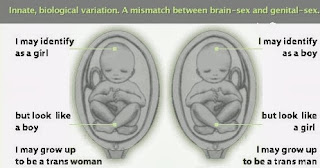
























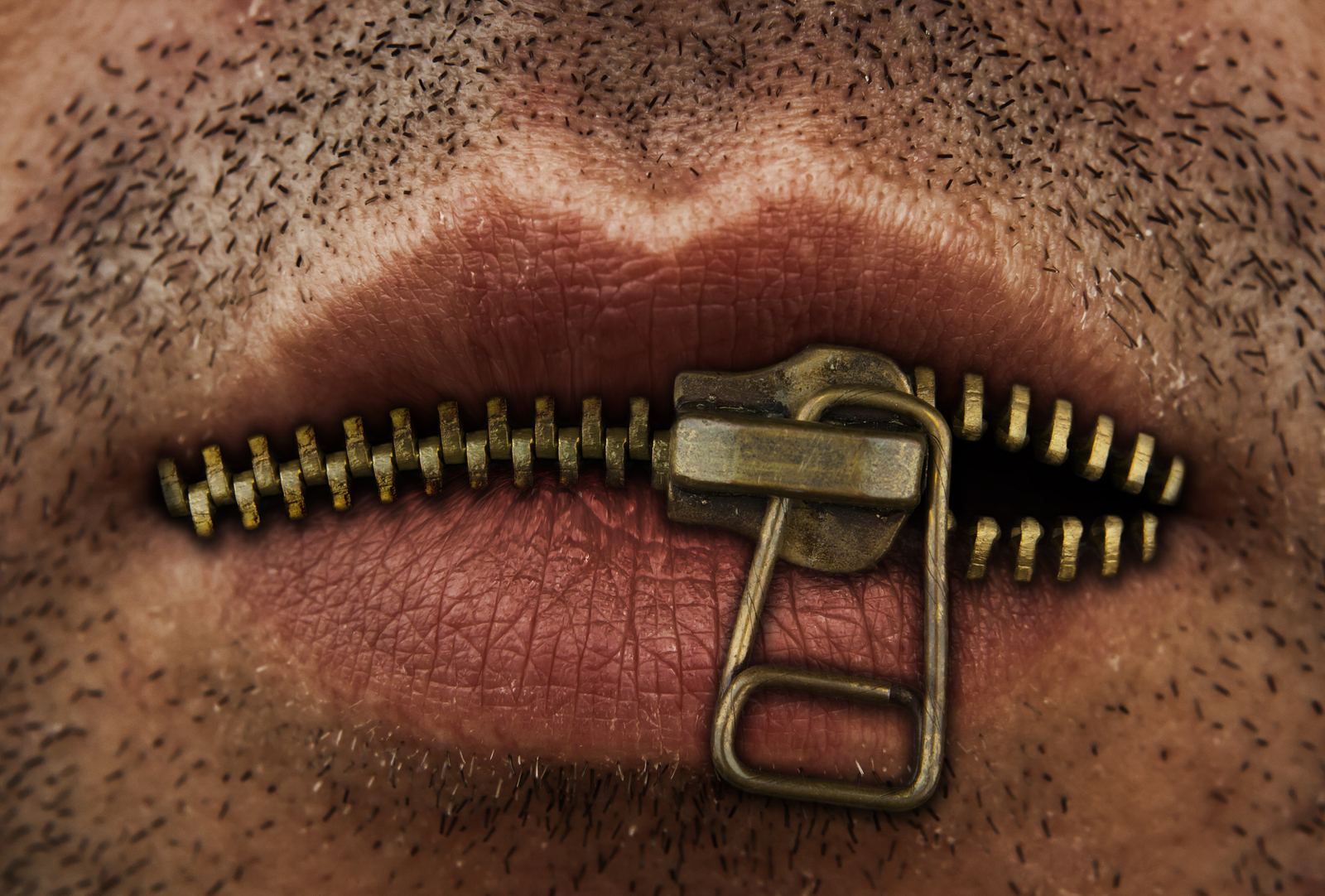




.mkv_000108708.jpg)
.mkv_000109059.jpg)
.mkv_000113988.jpg)











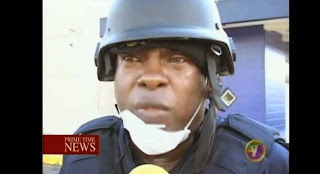
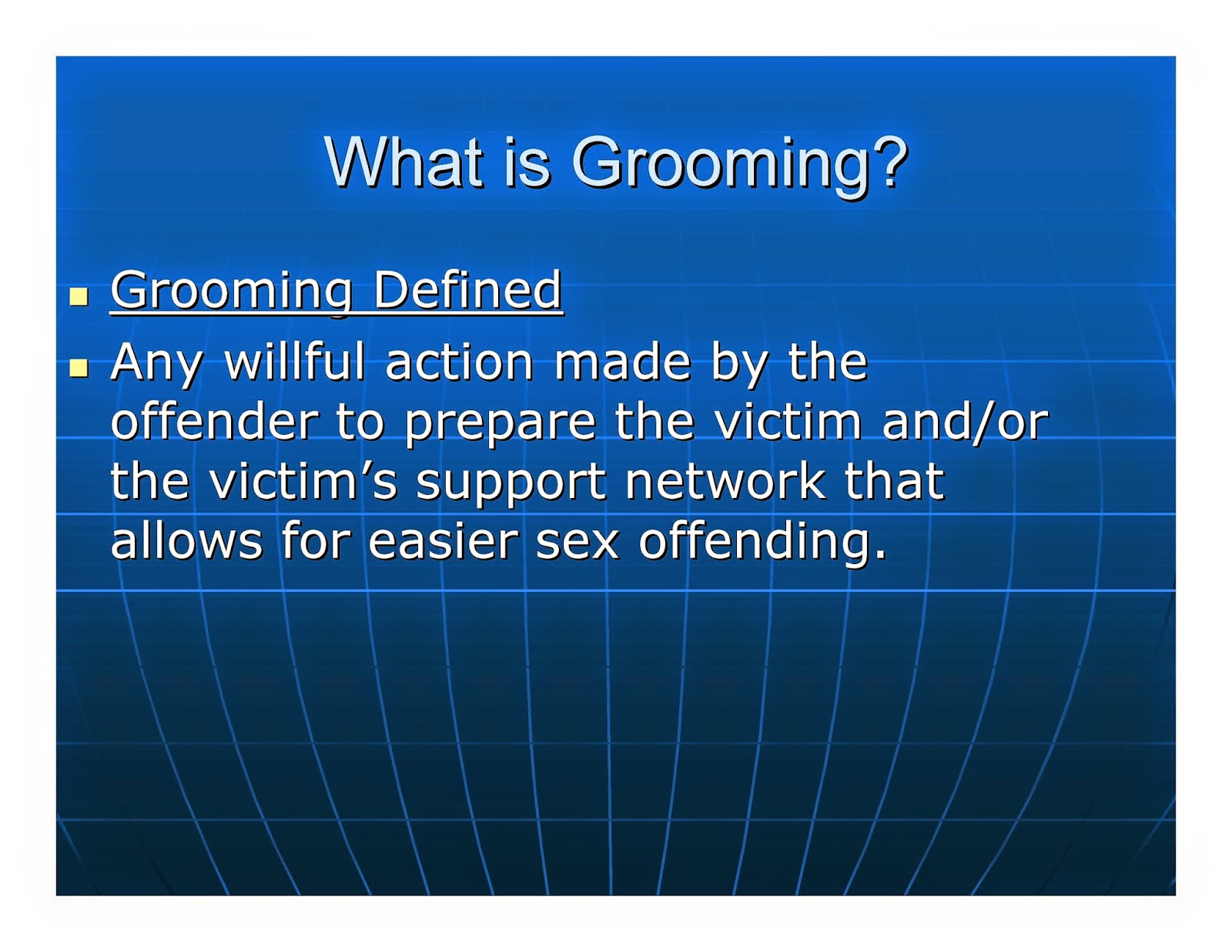



+(Light).jpg)














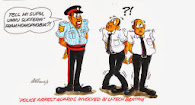











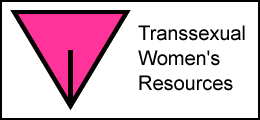












No comments:
Post a Comment